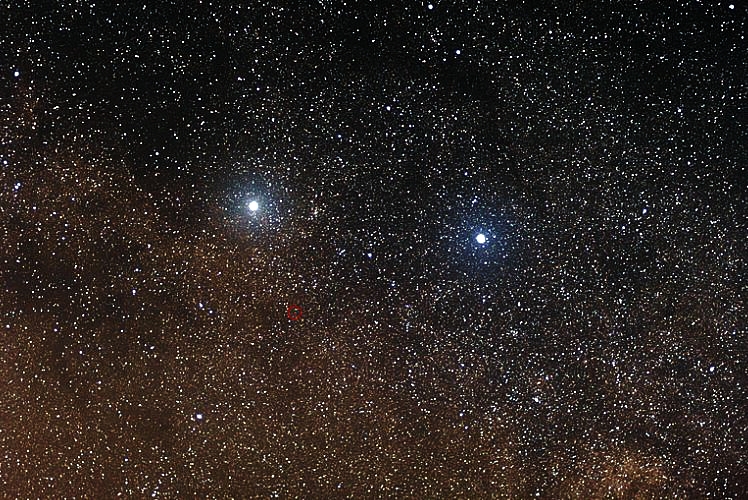Arthur J. Villasanta – Fourth Estate Contributor
London, United Kingdom (4E) – Hot on the heels of a prediction last week that robots with artificial intelligence (AI) for brains will exterminate the human race, cosmologist and increasingly vocal prophet of doom Stephen Hawking now claims climate change will turn the Earth into a searing fireball 600 years from now.
Hawking says that if humans don’t leave Earth soon, overpopulation and massive energy shortages will wipe-out the human race. This Armageddon can be thwarted if humans colonized habitable planets in Alpha Centauri, the closest star system to our Solar System.
Located 4.37 light years or 1.34 parsecs (pc) from the Sun, Alpha Centauri consists of three stars: Alpha Centauri A and Alpha Centauri B (which form the binary star, Alpha Centauri AB) and a small red dwarf named Alpha Centauri C (also named Proxima Centauri).
Proxima Centauri C has an Earth-like exoplanet named Proxima Centauri b that might be habitable.
Hawking wants monied investors to support his plans to build spacecraft capable of voyaging to Alpha Centauri. These robotic nanocraft go by the name “StarChip.”
These very small, centimeter-sized, gram-scale, interstellar spacecraft are now being developed as part of the Breakthrough Starshot program, which is a proposed mission to propel a fleet of a over 1,000 StarChips on a journey to Alpha Centauri. The journey might include a flyby of Proxima Centauri b.
These ultra-light StarChip nanocraft will each carry a “lightsail,” which is a form of spacecraft propulsion using radiation pressure from lasers or sunlight on large mirrors. The StarChips will travel at speeds of 15% to 20% of the speed of light, taking between 20 to 30 years to reach Alpha Centauri.
StarChips could reach Mars in less than an hour, or Pluto in a matter of days.
“Maybe if all goes well, sometime a little after the middle of the century, we’ll have our first picture of another planet that may be life-bearing orbiting the nearest star,” said Pete Worden, former head at NASA’s AMES Research Center and Starshot Breakthrough director.
In 2016, Hawking warned that humankind faces extinction over the next 100 years unless it finds a way to colonize Mars or another planet (Venus or one of the Jovian moons?), and become a “multi-planetary species” in the process.
“Although the chance of a disaster to planet Earth in a given year may be quite low, it adds up over time, and becomes a near certainty in the next thousand or 10,000 years,” said Hawking.
He also believes the Earth is becoming “increasingly precarious” due to threats arising from “climate change, overdue asteroid strikes, epidemics and population growth.”
Article – All Rights Reserved.
Provided by FeedSyndicate





















